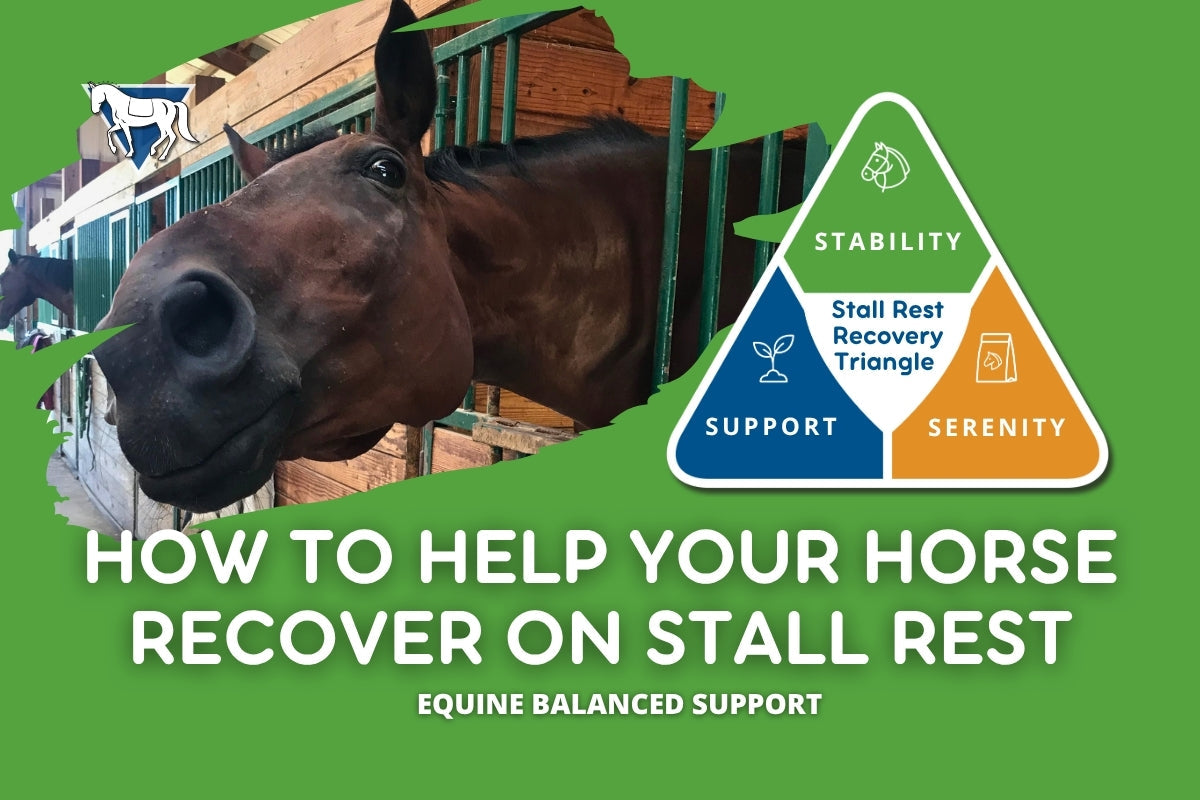How to Help Your Horse Recover on Stall Rest

Supporting the Whole Horse During Stall Rest
When your horse is on stall rest, everything changes. Movement stops—but healing, stress, and metabolic processes continue. Without the right approach, stall rest can lead to new complications instead of recovery.
This clinical and compassionate guide outlines our Stall Rest Recovery Triangle — three key categories to support your horse holistically through injury, illness, or surgery.

🔹 Stability (environment & movement)
🔹 Support (nutrition & physiology)
🔹 Serenity (mental health & behavior)
🔹 Stability: A Safe Environment + Controlled Movement
Create a healing environment and protect biomechanics.
Stall Environment
- Use soft, breathable bedding to support joints and reduce sores.
- Minimize noise and overexposure to visual stressors.
- Ensure proper airflow, light access, and safe social visibility.
Hoof Care & Surface Support
- Stay on a strict trim schedule to avoid flare and sole bruising.
- Use hoof boots or therapeutic pads if needed for protection.
- Assess posture and stance weekly to catch developing imbalances.
Controlled Movement
- Once cleared by a vet, begin in-hand stretches or hand-walking.
- Incorporate proprioceptive tools like balance pads and poles.
- Transition to turnout gradually, starting with short, supervised sessions.
Tissue Healing Timeline
- Inflammatory Phase (Days 1–5): Limit motion. Consider anti-inflammatory support and antioxidants like Vitamin E.
- Proliferative Phase (Days 5–21): Collagen repair begins. Support with copper, zinc, and amino acids.
- Remodeling Phase (Weeks 3+): Reintroduce movement based on pulse, swelling, gait, and pain assessment.
Regional Considerations
Climate, forage, and flooring affect recovery outcomes:
- Humid climates: Watch for hoof infections and moldy bedding.
- Dry zones: Increase hoof moisture; use dust-free bedding.
- Cold or icy seasons: Provide traction and warm shelter.
🍽️ Support: Nutrition + Internal Physiology
Fuel healing from the inside out.
Nutrition Adjustments
- Feed low-NSC, high-fiber hay — ideally tested and matched to your horse's needs.
- Eliminate unnecessary grains or sweet feeds.
- Use a complete balancer like DailyBase to fill micronutrient gaps.
Key Nutritional Tools
- Vitamin E (natural form): Antioxidant, muscle & nerve support.
-
Magnesium: Supports calm focus, gut resilience, and muscle relaxation.
- Supporting laminitis? Use Laminox
- Supporting a tendon injury? Use TendonEQ
- Recovering from colic surgery? Use ProbioticEQ
Monitor With Bloodwork
- Vitamin E and selenium status
- Muscle enzymes (CK, AST)
- Inflammation markers (CBC, fibrinogen)
Supplement & Drug Interactions
Consult your vet if using NSAIDs, corticosteroids, or sedatives. Some nutrients may affect drug absorption or efficacy.
🧠 Serenity: Mental Health + Behavior
Protect the mind to support the body. Stall rest often triggers boredom, frustration, and neurochemical imbalance.
Enrichment & Foraging
- Provide a variety of long-stem hay, chopped hay, or safe branches for chewing.
- Use slow feeders, treat toys, lick blocks, and window access for stimulation.
- Change enrichment types weekly to prevent boredom habituation.
Behavioral Routine
- Set a daily schedule for feeding, grooming, and brief training sessions.
- Train new behaviors using safe, low-NSC treats like Grazers Nutri-Treats.
- Keep routines calm and predictable to support hormonal and behavioral stability.
“Tikka reminded me that recovery isn’t just physical—it’s emotional. Enrichment gave us both something to hold onto.” —An Equine Balanced Support customer
💡 When to Ask for Help
Consult a professional if your horse shows escalating anxiety, aggression, or stereotypies:
- Certified Equine Behavior Consultant
- R+ (positive reinforcement) trainer
- Veterinary behaviorist for complex cases
Reach out to us anytime or browse our Help Me Choose page for product pairing guidance.
Frequently Asked Questions for Stall Rest
How long should my horse stay on stall rest?
This depends on the injury, healing stage, and your vet’s evaluation. Typical durations range from 2 to 12 weeks. Monitor for swelling, pulse, gait quality, and blood markers.
Can I give my horse calming supplements during stall rest?
Yes, but always check with your vet. Magnesium, thiamine, and adaptogens may be helpful. Sedatives should only be used short-term under veterinary supervision.
What natural calming options can help during stall rest?
Many horses benefit from natural supports like:
- Magnesium – Helps reduce excitability and supports neuromuscular function.
- Vitamin B1 (Thiamine) – Supports calm behavior under stress.
- Adaptogenic herbs – Like ashwagandha or valerian (always check for competition restrictions).
- Amino acids – L-tryptophan and others can support serotonin pathways.
Always choose products with clear labels and clinical-grade sourcing. Consult your vet before combining supplements.
What are signs my horse is struggling mentally?
Look for: excessive pawing, cribbing, stall walking, loss of appetite, withdrawal, or sudden aggression. Introduce enrichment and consult a behavior expert if needed.
How do I know when to reintroduce movement?
Vet clearance is essential. Use objective markers: absence of digital pulse, stable swelling, smooth gait transitions, and improved pain scores.
Healing takes more than time. With the right system of support, you can protect your horse’s body, mind, and spirit—turning stall rest into a truly restorative journey.








Leave a comment